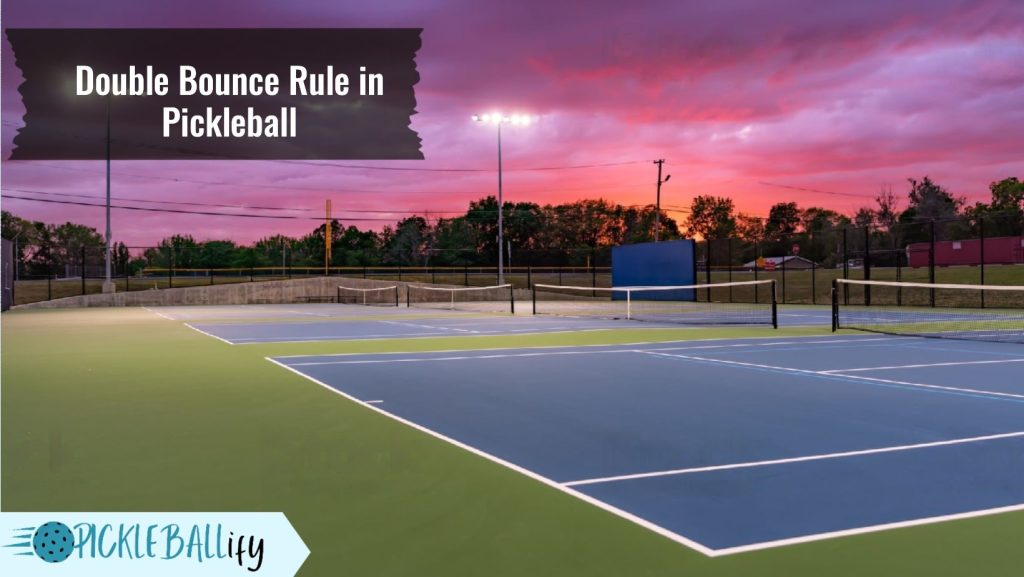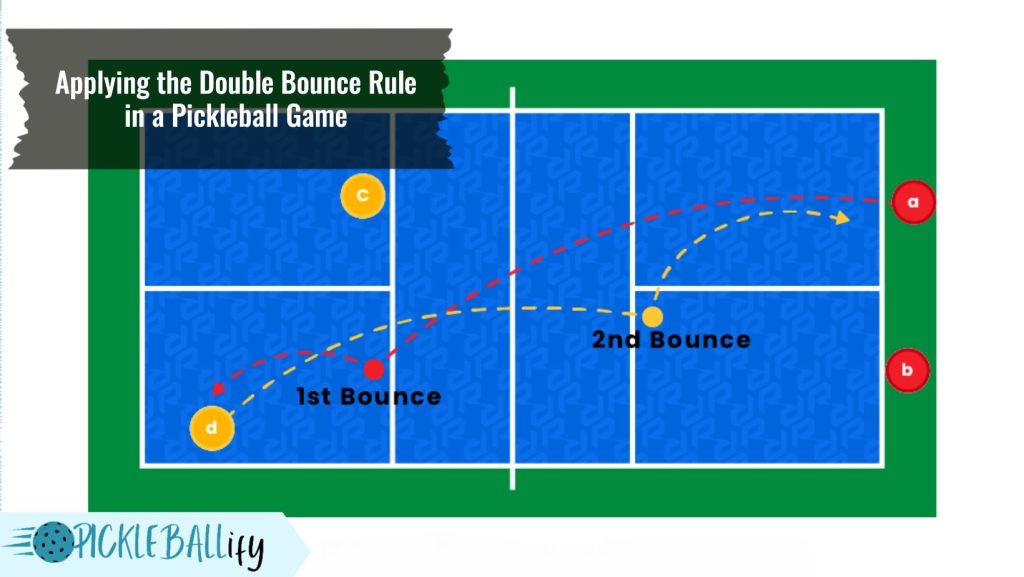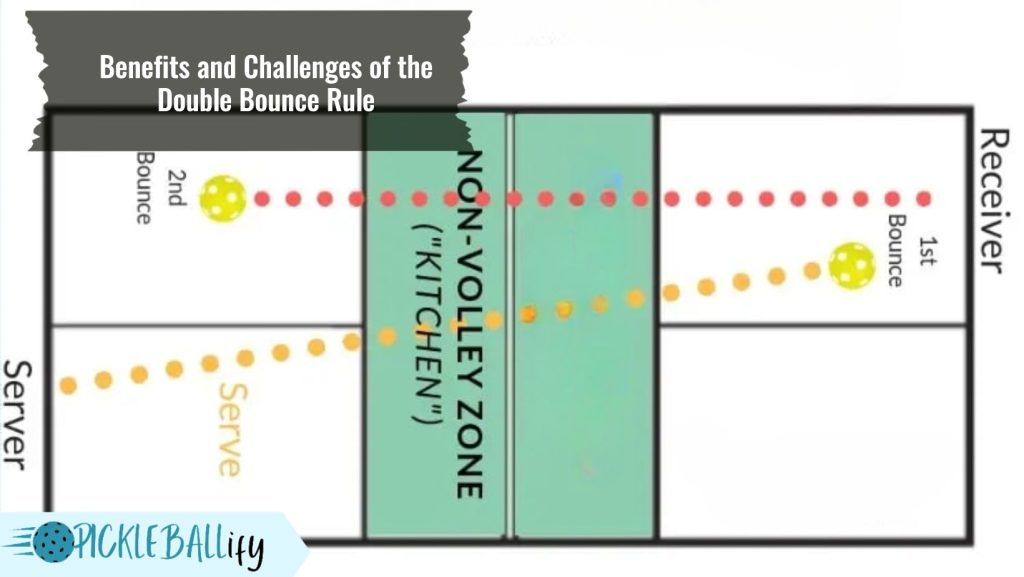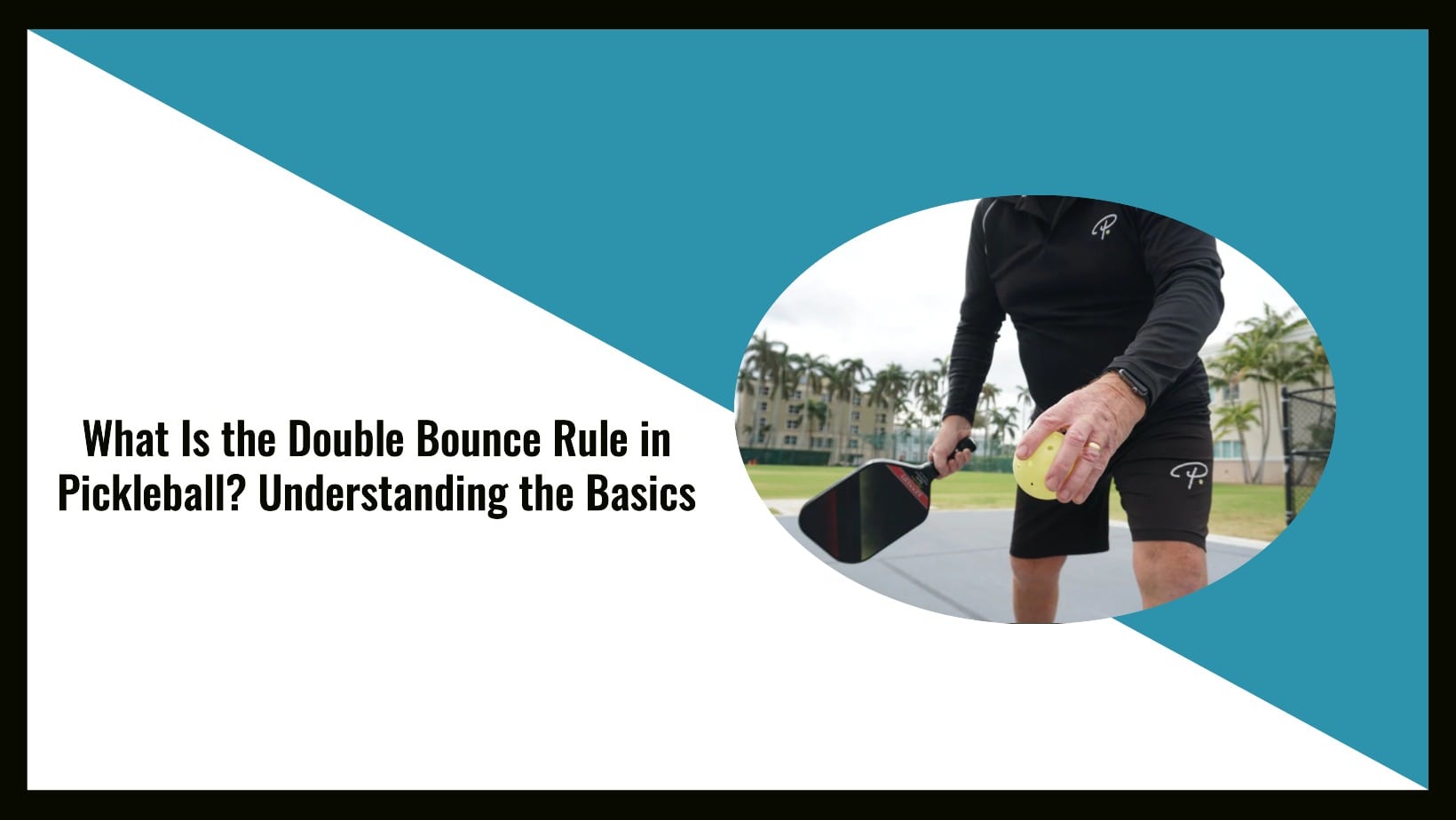Welcome to the world of pickleball, a fast-paced and exciting paddle sport that combines elements of tennis, badminton, and ping pong. If you’re new to pickleball, you may have come across the term “double bounce rule” and wondered what it’s all about.

Well, you’re in the right place! In this article, we’ll delve into the details of the double bounce rule in pickleball, explaining what it is, how it’s applied, and why it’s an important aspect of the game.
Whether you’re a beginner or an experienced player, understanding the double bounce rule is crucial for playing pickleball according to the official rules and enjoying the game to the fullest.
So, let’s dive in and uncover the ins and outs of the double bounce rule in pickleball!
The History and Evolution of the Double Bounce Rule
The double bounce rule has been part of pickleball since its inception in 1965. The inventors of pickleball, Joel Pritchard, Bill Bell, and Barney McCallum, created the rule to make the game more suitable for their families and friends who were not very athletic or experienced in racquet sports. They wanted to make pickleball a fun and easy game that anyone could play and enjoy.
The original name of the rule was the “double bounce rule”, but it was changed to the “two-bounce rule” in 2018 by the International Federation of Pickleball (IFP) and USA Pickleball Association (USAPA). The reason for this change was to avoid confusion with another term in pickleball: “double hit”.
A double hit is when a player hits the ball twice with their paddle in one swing, which is also a fault. By renaming the rule to “two-bounce”, the IFP and USAPA hoped to make it clearer and simpler for players and referees.
Why the Double Bounce Rule is Important for Pickleball Strategy
- The double bounce rule has an impact on how players set up on the court and think about their strokes. Both teams must wait back near the baseline before they may advance because they must let the ball bounce once before striking it.
- This gives both teams the chance to make long shots that have their opponents reposition themselves. Also, it gives both teams the chance to make quick shots that land close to the goal and compel their opponents to advance.
- Getting to the net and controlling the point with volleys and dinks are the objectives of pickleball strategy. A shot that is fired in the air before it bounces is called a volley. A dink is a delicate shot that barely clears the net and landing in what is known as the kitchen or non-volley zone.
- Players are prohibited from volleying the ball in the kitchen, a 7-foot space on either side of the goal. Only when they are not striking a volley or while they are executing after hitting a volley are they permitted to go inside the kitchen.
- The double bounce rule makes it more difficult for both teams to volley or dink their way to the goal. They must wait for the ideal opportunity to advance without putting themselves at risk of a long or short shot from their opponents. Whether they are volleying or dinking, they must also be careful not to walk into the kitchen.
How to Apply the Double Bounce Rule in a Pickleball Game
To observe the double bounce rule in a pickleball game, players need to follow these steps:
- One player serves the ball diagonally to the opposite side of the court, aiming for the service box that does not contain the centerline or non-volley zone (also known as the kitchen).

- The receiving team must let the ball bounce once in their service box before returning it back to the serving team. They cannot volley or catch the ball before it bounces.
- After these two bounces have occurred, either team can volley or groundstroke the ball until the point is over. However, they still need to respect other rules such as not stepping into or touching
the non-volley zone while volleying.
The Benefits and Challenges of the Double Bounce Rule
The double bounce rule has many benefits for pickleball players of all levels. Some of them are:
- It extends the game’s time and ensures better rallies and longer play. This makes pickleball more fun and exciting, as well as more beneficial for physical and mental health.
- It raises the level of strategy and competition in the game. Players must consider their shot placement, court positioning, and whether to attack or defend. The double bounce rule also motivates athletes to master a wide range of techniques, including groundstrokes, volleys, dinks, lobs, and drops.
- It lowers the chance that another player may get undue advantages. The double bounce rule equalizes the field and provides each side with an equal chance to score. Also, it stops players from racing to the net immediately following the serve or return and hitting ferocious volleys, which might intimidate or irritate less skilled players.
- Beginner and intermediate pickleball players will find it easier to play and more fun as a result. The double bounce regulation gives athletes extra time to react and be ready for each shot, which can increase their self-assurance and drive. They can also learn the fundamentals of pickleball without getting frustrated or overwhelmed.

However, the double bounce rule also has some challenges that players need to overcome. Some of them are:
- For new players, it might be difficult to remember and can be confusing. It might take some time and effort to get acclimated to the double bounce rule, one of pickleball’s most distinctive and uncommon regulations. When it’s not necessary, players could neglect to let the ball bounce or volley, which can lead to errors or disputes.
- In some circumstances, it might be challenging to determine whether the ball bounced or not. When the ball strikes the ground extremely softly or very near to a player’s paddle, it is occasionally difficult to determine whether it rebounded or not. In particular, in cases where there is a lack of clear evidence or replay, this may result in conflicts or disagreements amongst players or officials.
- It could restrict a player’s preferred or natural style of play. Depending on their personality or ability level, some players could prefer to play more defensively or offensively. They can be forced to change how they play or alter their strategy due to the double bounce regulation.
Common Mistakes and Misconceptions About the Double Bounce Rule in Pickleball
The double bounce rule can be confusing for some players who may make mistakes or have misconceptions about it. Here are some common ones.
“Pickleball is a game where the underhand serve, and even more important, the double bounce rule do not give the serving team an advantage. This is one of our favorite. It is unique among other paddle sports.” Stated in PickleballConnections.
- Believing that after one bounce, you can hit a volley or a dink. You need to be behind the kitchen line in order to accomplish it.
- Assuming that after one bounce, you can enter the kitchen. If you don’t follow through after hitting a volley or a dink, you can’t accomplish it.
- You’re under the impression that you can hit a volley or a dink from inside the kitchen. If you don’t follow through after hitting a volley or a dink from behind the kitchen line, you won’t be able to achieve it.
- Claiming that the serve and return are the sole plays to which the double bounce rule applies. Up until the ball has been struck by both teams after one bounce, it applies to every stroke.
- Assuming that the double bounce rule may be waived or altered. All pickleball games and contests must adhere to this obligatory, general regulation.
FAQs
If a player violates the double bounce rule in pickleball by hitting the ball out of the air before it has bounced on both sides of the net, it is considered a fault, and the opposing team is awarded a point. The serving team would lose their serve, and the receiving team would gain the opportunity to serve. It’s important for players to adhere to the double bounce rule to maintain fair play and avoid penalties.
In standard pickleball games, there are no exceptions to the double bounce rule during the serve and the return of serve. However, in some informal or recreational settings, players may agree to modify the rule or waive it all together for various reasons. It’s essential to establish clear communication and consensus among players before deviating from the standard double bounce rule to avoid any confusion or disputes during the game.
The double bounce rule can greatly impact pickleball rallies by prolonging them and increasing the number of shots exchanged between teams. Since both teams must let the ball bounce once on each side of the net, it can result in longer rallies, more strategic shot placement, and increased opportunities for both offensive and defensive plays. The double bounce rule adds an exciting element to pickleball rallies, making the game more dynamic and engaging for players and spectators alike.
The double bounce rule can be initially confusing for beginners in pickleball, as it differs from other racket sports where hitting the ball out of the air is allowed. However, with practice and understanding, beginners can quickly grasp the concept of the double bounce rule and incorporate it into their gameplay. It’s important for beginners to familiarize themselves with the rule and practice letting the ball bounce before hitting it to ensure they are playing by the rules and enjoying the game to the fullest.
Final Words
In conclusion, the double bounce rule is an important aspect of pickleball that promotes fair play, strategic thinking, and enjoyable gameplay. It requires the ball to bounce once on each side of the net during the serve and return of serve, ensuring both teams have an equal opportunity to make play on the ball.
While it may initially be confusing for beginners, with practice and understanding, players can incorporate the double bounce rule into their gameplay. Advanced players can use the rule strategically to gain an advantage over their opponents.
It’s crucial for all players to adhere to the double bounce rule during standard games, although exceptions may be made in informal settings with mutual agreement among players.
Understanding and respecting the double bounce rule enhances the overall experience of playing pickleball and promotes a fun, competitive, and fair game for all players.

